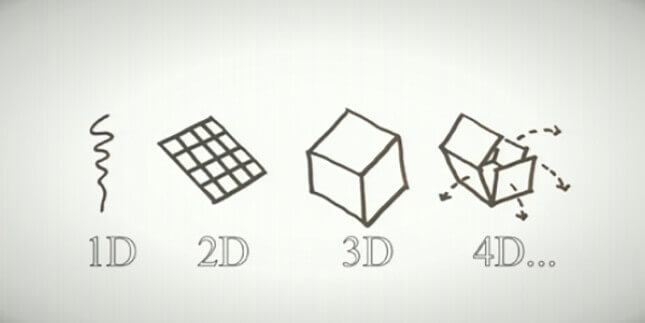4D Printing: Object Adaptation and Automation
With 3D printing a reality, it was only a matter of time before scientists began experimenting with the idea of 4D printing. But what does this mean for the scientific community, and in turn, for the world? According to an article published on Smithsonian.com, research into the field of 4D printing could mean a complete shift in the way our society manufactures everything and anything, from printing entire meals to recreating facial features to repair a patient’s face.

source: brit.co
To begin to understand the implications and possibilities attached to this research, it’s crucial to understand exactly what 4D printing would enable. The major difference from 3D printing is that objects would be able to adapt to different needs. The article gives the example of a pipe, 4D-printed, having the capability to change its shape, from something linear, to something supporting a cube-structure, for example. Additionally, 4D printed objects would be able to recreate themselves. Of the two possibilities suggested herein, this seems more nebulous. Perhaps that’s because different sources and forms of energy would have to be incorporated in order to reach that goal.
Before we even reach the point where we can begin using 4D printing to develop adaptable and automated objects, a discussion of the impacts this could potentially have on our world is just as important as understanding the science behind the process. 4D printing would completely revolutionize our manufacturing and building industries. If successful, 4D printers would indeed do just that.
By utilizing different energy sources (such as heat and vibrations), we could expect a different environmental impact. It can’t be so easily determined whether or not that shift would be to our benefit without more research. For example, manufacturing that relied upon vibrations for energy would most likely lead to a smaller carbon footprint. That’s great, right? But is there a possibility that there could be other issues? How much vibration would be necessary? Would we need to regulate it, like sound pollution is regulated to avoid people suffering the negative side effects of sonic booms on a daily basis? Is there a possibility that a change to an un-tried energy source could hurt our world, and with it, us? We’re not saying it’s good or bad-but it’s important to ask those questions.
How would 4D printing affect our job market and economy? Would there be more jobs-and high level at that-because of the necessary research into 4D printing? Or would there be fewer jobs because manufacturing would become an automated process? Would the change in the job market balance out? Would it help or hurt our already strained economy? Maybe it would help at first, and hurt us later, or the other way around. Given that we couldn’t have expected, thirty years ago, to be researching this technology, can economists even accurately predict where it will lead us?
For now, the promise of so exciting a technological advance as 4D printing is subject to these questions and more. Until then, we won’t be selling 4D printing products and technology, but you can still find great deals on printers and ink carridges.
 If you subscribe by clicking here, you will get huge discounts twice per week
If you subscribe by clicking here, you will get huge discounts twice per week
